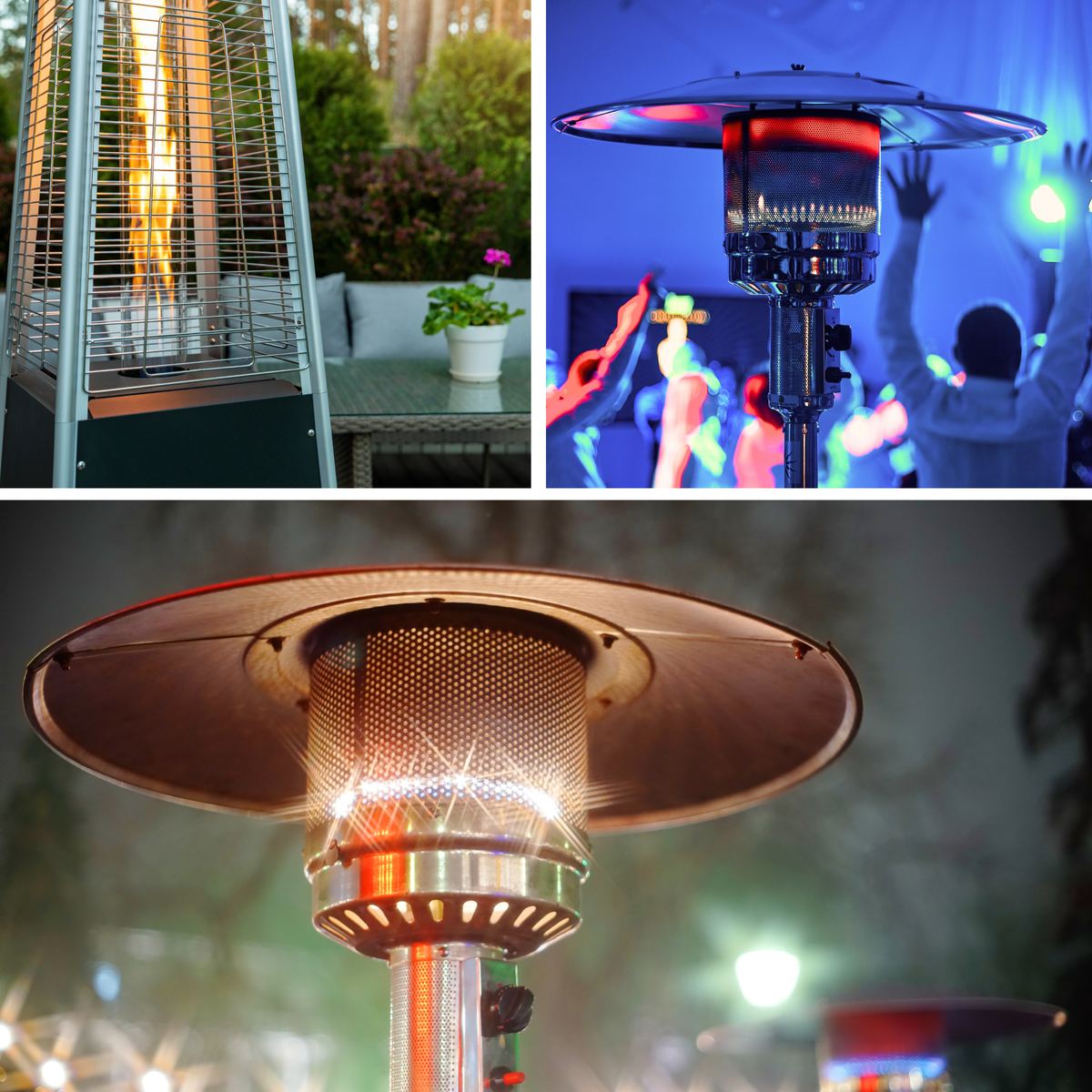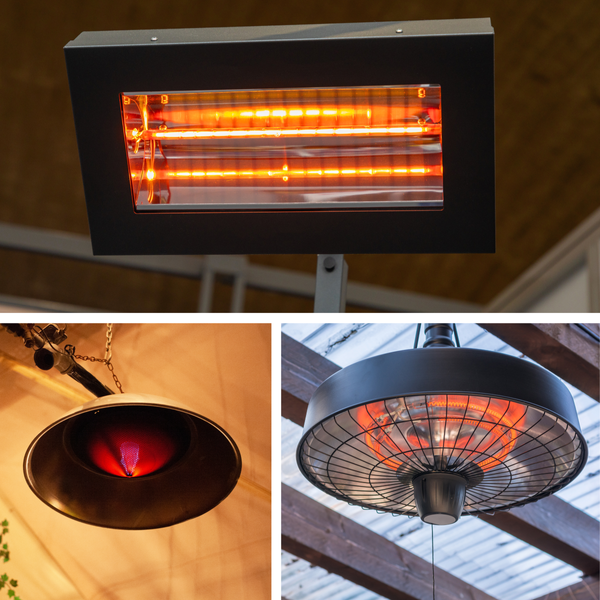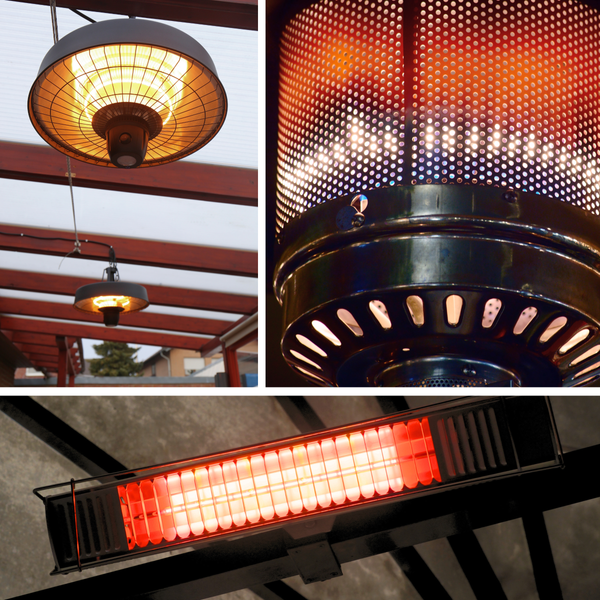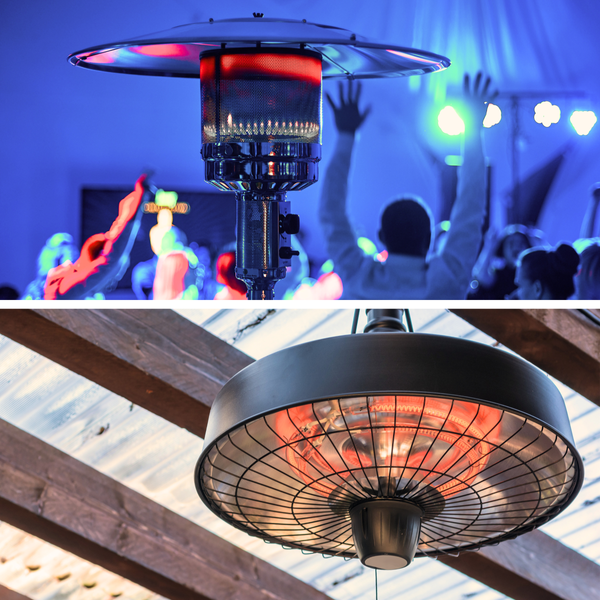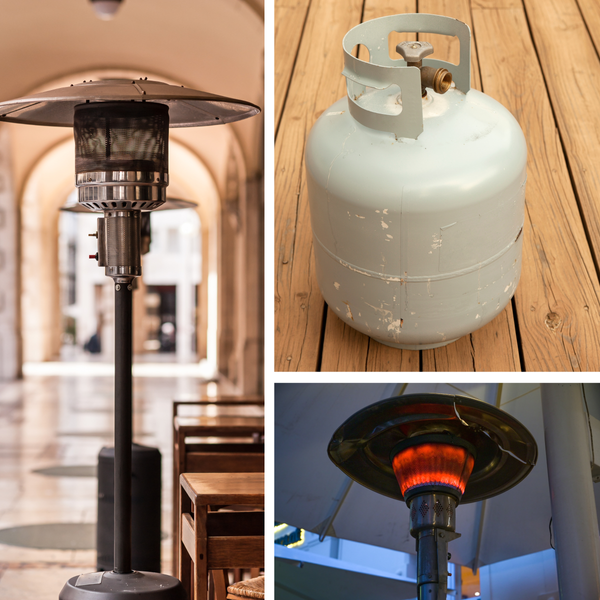Key Takeaways:
- Understand the benefits and drawbacks of different types of patio heaters.
- Learn about the efficiency and cost-effectiveness of patio heaters.
- Discover practical considerations when choosing a patio heater for your outdoor living space.
Outdoor living spaces have become extensions of our homes, offering a place to relax, entertain, and enjoy the fresh air. But as temperatures drop, the question arises: is a patio heater worth it? This comprehensive guide will explore the ins and outs of patio heaters, helping you decide whether they're a valuable addition to your outdoor space.
What Are Patio Heaters and How Do They Work?
Patio heaters are outdoor appliances designed to provide heat in an outdoor environment. Most patio heaters work by using a heating element to emit heat, which is then radiated outward to warm the surrounding area. They come in various types, including propane heaters, electric patio heaters, and infrared heaters, each with its own method of heating your outdoor space.
Propane patio heaters rely on propane tanks to fuel the heating element. They are known for their portability and high propane heating power, making them a popular choice for those who need a movable heat source. Electric patio heaters, on the other hand, require access to an electrical outlet but offer the convenience of a steady heat source without the need to replace propane tanks.

The Different Types of Patio Heaters
When considering a patio heater, it's essential to understand the different styles available. Tower heaters, pyramid style heaters, and wall-mounted units are among the most common. Tower heaters stand tall and emit heat downward, while pyramid heaters often feature a glass tube that showcases the flame and beams warm waves directly to your outdoor area. Wall-mounted heaters are a space-saving option that can provide heat without taking up valuable floor space.
Each type of heater has its own set of advantages. For example, pyramid heaters can be a stunning visual addition to your outdoor kitchen, while wall-mounted heaters can be ideal for a more enclosed space. The choice depends on your specific needs and the layout of your outdoor living space.
Propane vs. Electric: Which Heater is Right for You?
Deciding between a propane or electric heater can be challenging. Propane heaters offer the advantage of high heating power and mobility since they don't require a fixed power source. However, they also require the regular purchase and storage of propane tanks. Electric outdoor heaters are more eco-friendly, with lower carbon emissions and often less fuel consumption.
Electric heaters are typically easier to maintain and can be more cost-effective in the long run, especially if you have an existing natural gas line or prefer a heater with much lower heat outputs. Infrared heaters, a subset of electric heaters, produce infrared heat that warms people and objects directly, making them highly efficient.
The Efficiency of Patio Heaters
When it comes to efficiency, not all patio heaters are created equal. Infrared heaters are known for their ability to provide immediate warmth, as they emit heat that is absorbed by objects and people rather than heating the air. This means less heat is lost to the surrounding environment, making them an efficient choice for outdoor spaces.
Propane heaters, while effective, may not be as efficient in terms of fuel usage. They can produce more heat, but this also means they consume more fuel. It's important to consider the long-term costs associated with refilling propane tanks versus the potential energy savings of electric or infrared heaters.

The Cost of Running a Patio Heater
The cost of operating a patio heater varies depending on the type of heater and the cost of fuel or electricity in your area. Propane heaters typically have higher operational costs due to the price of propane. Electric patio heaters, while potentially more expensive upfront, can be cheaper to run if electricity costs are low.
To calculate the cost of running a patio heater, you'll need to consider the wattage or BTU output of the heater and how often you plan to use it. This will give you a clearer picture of whether the investment in a good patio heater aligns with your budget and usage patterns.
The Aesthetic Appeal of Patio Heaters
Patio heaters aren't just functional; they can also enhance the aesthetic of your outdoor space. Pyramid style heaters, with their elegant design and visible flame, can serve as a focal point in your garden or patio. Electric heaters offer a sleek, modern look that can complement contemporary outdoor furniture.
Choosing a patio heater that matches the style of your outdoor living space can add to the overall ambiance, making it a more inviting place to spend time, even when the temperatures drop.
Maximizing Efficiency with Radiant Heat Technology
Radiant heat is a game-changer when it comes to outdoor heaters, especially in the realm of electric patio heaters. Unlike traditional space heaters that heat the air, radiant heat technology directly warms objects and people, providing a more efficient and immediate sense of warmth. This means that even on a breezy evening, the heat won't simply be blown away. Instead, it's directed where it's needed most, ensuring your outdoor space stays cozy without wasting energy.
The best outdoor patio heaters often utilize this technology to maximize comfort and minimize costs. For instance, a Hiland heater with radiant heat technology can make a significant difference in how heat is distributed across your patio. By focusing the outward radiating heat towards seating areas, you can create a warm bubble that envelops your guests, making your outdoor gatherings more inviting and enjoyable.

The Benefits of Wall Mounted Patio Heaters
Wall mounted patio heaters are a sleek and practical addition to any outdoor space. They are perfect for those who prefer a more permanent heating solution that doesn't take up valuable floor space. One heater mounted on the wall can provide the same amount of warmth as two heaters placed on the ground, thanks to the strategic positioning and the efficient use of radiant heat. This setup is ideal for smaller patios or balconies where space is at a premium.
Moreover, opting for a wall mounted electric patio heater from the same manufacturing plant or same factory as a well-known brand can offer the same quality and performance at a potentially lower cost. For example, an off brand model produced in the same facility as a top-tier brand might share many of the same components and design features. This can be a smart choice for consumers looking for reliable warmth that has been on the market for more than a year, ensuring that the product has stood the test of time.
Safety Features to Consider
Safety is a paramount concern when it comes to any heat source, and patio heaters are no exception. Look for models with built-in safety features such as tip-over protection, which shuts off the heater if it's accidentally knocked over. Some heaters also come with a safety shut-off valve that turns off the gas if the flame goes out.
Additionally, ensure that the patio heater you choose is suitable for the space you intend to use it in. For example, enclosed spaces require heaters designed for that environment to prevent the buildup of harmful gases.
How to Choose the Right Size Patio Heater
The size of the patio heater you need depends on the size of your outdoor space and how much area you want to keep warm. A larger propane heater may be necessary for expansive areas, while a smaller electric or infrared heater might suffice for a cozy patio.
It's important to consider the heat output, measured in BTUs for propane heaters and watts for electric heaters. A higher number indicates more heat, but also higher fuel or energy consumption. Balance the need for warmth with the cost of operation to find the right size heater for your space.

Installation and Maintenance
Installing a patio heater can range from simple to complex, depending on the type. Propane heaters are generally easy to set up, requiring only the attachment of a propane tank. Electric heaters may need professional installation, especially if they require hardwiring or a dedicated circuit.
Maintenance is also a consideration. Propane heaters may need more frequent cleaning to ensure the burner remains clear of debris, while electric heaters typically require less upkeep. Always follow the manufacturer's instructions for maintenance to ensure your heater operates safely and efficiently.
The Environmental Impact of Patio Heaters
When considering whether a patio heater is worth it, it's important to think about the environmental impact. Propane heaters produce emissions, contributing to your carbon footprint. Electric heaters are cleaner, especially if your electricity comes from renewable sources.
Infrared heaters are often touted as the most environmentally friendly option, as they provide targeted heating with less energy waste. Choosing a heater with a lower environmental impact can be a responsible choice for those concerned about sustainability.
Patio Heaters vs. Fire Pits
An alternative to patio heaters is the traditional fire pit. Fire pits can offer a more natural experience, with the crackle of burning wood and the ability to roast marshmallows or hot dogs. However, they also come with drawbacks, such as smoke, the need for constant wood supply, and potential fire hazards.
Patio heaters provide a cleaner, more controlled heat source without the mess and maintenance of wood burning. They can be a more convenient and safer option for those who want to enjoy their outdoor space without the hassle of a fire pit.

Enhancing Your Outdoor Living Space with a Patio Heater
A patio heater can transform your outdoor living space into a year-round retreat. By extending the usability of your patio or deck into the cooler months, you can get more enjoyment and value out of your outdoor area.
Whether you're hosting a dinner party, enjoying a quiet evening under the stars, or simply wanting to relax outside without the chill, a patio heater can provide the warmth and comfort you need to make the most of your outdoor space.
Summary
Patio heaters can be a valuable addition to any outdoor living space, offering warmth, ambiance, and extended usability as temperatures drop. Whether you opt for a propane, electric, or infrared heater, consider the size of your space, safety features, installation requirements, and environmental impact. With the right patio heater, you can enjoy your outdoor area in comfort and style, making it a worthwhile investment for many homeowners.
FAQ Section
Q: How much does it cost to run a patio heater?
A: The cost to run a patio heater varies based on the type of heater, the cost of fuel or electricity, and how often you use it. Propane heaters generally have higher operational costs, while electric heaters may be more cost-effective in the long run.
Q: Are patio heaters safe to use in enclosed spaces?
A: Not all patio heaters are designed for use in enclosed spaces. It's crucial to choose a heater specifically rated for indoor or enclosed use to prevent the buildup of harmful gases and ensure proper ventilation.
Q: Can patio heaters be left outside year-round?
A: While many patio heaters are designed for outdoor use, it's best to protect them from extreme weather conditions. Using a cover or storing the heater in a shed or garage when not in use can extend its lifespan and ensure it remains in good working condition.



